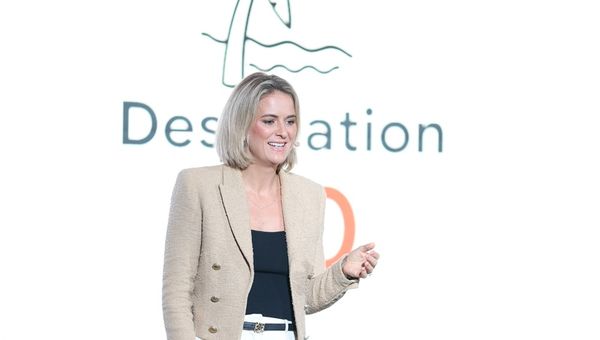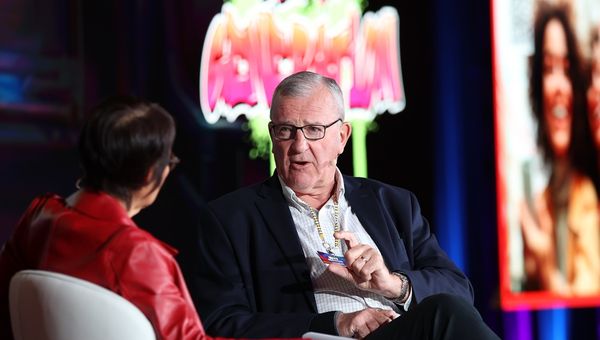Over the past two decades, WiT Singapore has become a leading travel tech event in the Asia Pacific region. Led by founder and managing director of the event, Yeoh Siew Hoon, WiT Singapore continues to explore how technology is reshaping the travel industry. This year’s event took a deep dive into innovations from OTAs to the growing influence of TikTok on travel marketing.
The big picture: Growth in APAC travel
The Asia Pacific region is not just recovering from the challenges of Covid-19 but is thriving, with significant opportunities emerging in the travel sector. Highlighting these macro trends, Hermione Joye, sector lead, travel and vertical search APAC at Google, emphasised the need to focus on the bigger picture to identify where the growth lies.

According to Hermione Joye, Google found that six in ten surveyed APAC travellers stated they have used or would use visual touchpoints for travel inspiration.
“APAC isn’t just keeping pace, it’s setting the pace,” Joye said, citing statistics that show 80% of travellers are eager to travel more in 2024, a 6-point increase from 2022. Furthermore, 60% of travellers are willing to spend on luxury experiences such as upgraded accommodations or business class seats, reflecting a shift toward higher-end travel experiences.
According to Joye, despite economic and political uncertainties, APAC travel remains resilient, driven by new markets like India, Japan, Australia, and Indonesia.
“What strikes me is how buoyant APAC travel is despite the uncertainties,” she added, noting that 56 million new travellers are expected to enter the market over the next four years.
TikTok’s role in travel discovery
TikTok is rapidly becoming a key platform for travel discovery, particularly among Gen Z, with 64% of its users relying on it as a search engine.
Travel is now one of the most searched topics on the platform, generating over 211 million searches per month — a ninefold increase compared to just two years ago. Eason Zhang, head of travel, strategic partnerships at TikTok, shared these insights, highlighting the platform's growing influence in the travel sector.
![“One pain point is that people discover content here [on Tik Tok] but they’re booking elsewhere.” – Eason Zhang, head of travel, strategic partnerships at TikTok. “One pain point is that people discover content here [on Tik Tok] but they’re booking elsewhere.” – Eason Zhang, head of travel, strategic partnerships at TikTok.](https://ik.imgkit.net/3vlqs5axxjf/TW-Asia/ik-seo/uploadedImages/Industry/Trade_Shows_Events/wit-2-241021/“One-pain-point-is-that-people-discover-content-he.jpg?tr=w-600%2Ch-340%2Cfo-auto)
“One pain point is that people discover content here [on Tik Tok] but they’re booking elsewhere.” – Eason Zhang, head of travel, strategic partnerships at TikTok.
Zhang also noted that TikTok’s audience is expanding beyond younger users. “TikTok isn’t only for teenagers looking at dancing and cat videos,” he said.
The platform’s content and collaborative filtering features — where interactions such as liking, sharing, and commenting are tracked — drive its powerful algorithm. These filters help personalise travel content, encouraging users to explore more destinations.
However, a key challenge remains: while TikTok is driving travel inspiration, bookings often happen elsewhere.
“One pain point is that people discover content here but they’re booking elsewhere,” Zhang said. TikTok is addressing this gap through partnerships with platforms like Klook and Agoda, enabling in-app bookings, with plans to potentially launch a dedicated TikTok travel shop in the future.
Aviation innovations and customer experience
The aviation industry was also in focus at WiT Singapore. Nadia Omer, CEO of AirAsia Move, shared insights on how the platform, formerly known as Capital A’s super app, is evolving to offer greater flexibility and customer choice.

“Flexibility and customer choice are essential when offering flights from other airlines.” – Nadia Omer, CEO of AirAsia Move
With the ability to book flights from multiple airlines, along with hotels and other travel services, AirAsia Move is positioning itself as a one-stop platform for travellers.
Omer, who has been in her role for just a year, emphasised the need for OTAs to provide more than just transactions. “Where’s the agent part of it?” she asked. “If there’s no facilitation, the service part, the agent part is missing.”
Michael Cawley, a non-executive director at Ryanair, also addressed the role of technology in aviation. Known for its strict cost-cutting measures, Ryanair is now turning to AI not just for cost reduction but for improving customer experience.

“AI will give us better service, faster, in more languages. If there are cost benefits, then all the better.” – Michael Cawley, non-executive director of Ryanair
“We’re not looking at it as cost reduction,” Cawley said. “AI will give us better service, faster, in more languages. If there are cost benefits, then all the better.”
In the coming months, WiT events are coming to Seoul, Cape Town and Tokyo.